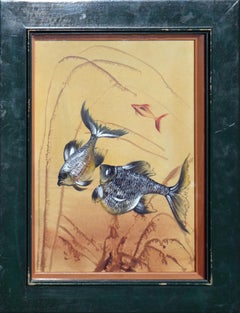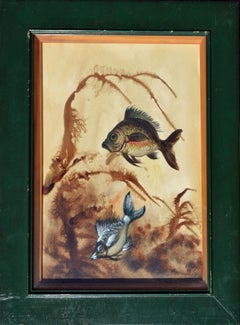Vittorio Guidotti
1930s Impressionist Animal Paintings
Paper, Watercolor
Recent Sales
1930s Impressionist Animal Paintings
Paper, Watercolor
People Also Browsed
Antique 16th Century Cambodian Ceramics
Ceramic
21st Century and Contemporary Books
Foil
1940s Modern Landscape Paintings
Oil
Early 19th Century French School Portrait Paintings
Oil
1960s Impressionist Landscape Paintings
Oil, Cardboard
Antique Early 19th Century English Sculptures and Carvings
Slate
Vintage 1950s Coffee and Cocktail Tables
Leather, Wood
19th Century Figurative Paintings
Oil
Vintage 1980s American Modern Posters
Paper
Antique 15th Century and Earlier Cambodian Antiquities
Bronze
2010s Contemporary Black and White Photography
Archival Pigment
1930s Post-Impressionist Landscape Paintings
Canvas, Oil
Early 20th Century Impressionist Nude Paintings
Canvas, Oil
Antique Mid-19th Century Southeast Asian Chinese Export Animal Sculptures
Crystal
1950s Contemporary Portrait Photography
Silver Gelatin, Photographic Film, Photographic Paper
20th Century Swedish Scandinavian Modern Candlesticks
Pewter
A Close Look at Impressionist Art
Emerging in 19th-century France, Impressionist art embraced loose brushwork and plein-air painting to respond to the movement of daily life. Although the pioneers of the Impressionist movement — Claude Monet, Edgar Degas, Paul Cézanne, Berthe Morisot, Camille Pissarro, and Pierre-Auguste Renoir — are now household names, their work was a radical break with an art scene led and shaped by academic traditions for around two centuries. These academies had oversight of a curriculum that emphasized formal drawing, painting and sculpting techniques and historical themes.
The French Impressionists were influenced by a group of artists known as the Barbizon School, who painted what they witnessed in nature. The rejection of pieces by these artists and the later Impressionists from the salons culminated in a watershed 1874 exhibition in Paris that was staged outside of the juried systems. After a work of Monet’s was derided by a critic as an unfinished “impression,” the term was taken as a celebration of their shared interest in capturing fleeting moments as subject matter, whether the shifting weather on rural landscapes or the frenzy of an urban crowd. Rather than the exacting realism of the academic tradition, Impressionist paintings, sculptures, prints and drawings represented how an artist saw a world in motion.
Many Impressionist painters were inspired by the perspectives in imported Japanese prints alongside these shifts in European painting — Édouard Manet drew on ukiyo-e woodblock prints and depicted Japanese design in his Portrait of Émile Zola, for example. American artists such as Mary Cassatt and William Merritt Chase, who studied abroad, were impacted by the work of the French artists, and by the late 19th century American Impressionism had its own distinct aesthetics with painters responding to the rapid modernization of cities through quickly created works that were vivid with color and light.
Find a collection of authentic Impressionist art on 1stDibs.
Finding the Right Animal-paintings for You
Animal paintings depict the beauty and power of nature in an elegant way that can complement any room. Interacting with animals has long captured the imagination and has been interpreted in diverse artistic media.
Some of the oldest works of art have included animals, such as a cave painting found in Indonesia dating back more than 45,500 years that shows a wild pig in red ocher pigment. Animals have continued to appear in every era and style of art, from realism to Pop art and everything in between.
Some paintings portray animals in their natural habitat, highlighting the majesty of wild creatures roaming the plains, forests and jungles. These paintings often feature deer, tigers, wild mustangs and other wildlife. Others focus on domestic animals such as dogs — pay a visit to the Museum of the Dog if you don’t believe us — as well as cats and how they interact with the world and their owners.
Picking the right animal painting for a room — as well as knowing how to arrange your new wall art — can take time. But, in the end, it will tastefully reflect your interests and passions. While an expansive landscape painting helps open up a small space, hanging a horse painting in a den shows a love for equine culture and can invite interesting conversation.
There is animal art to fit every collection on 1stDibs. Explore a wide selection of animal paintings and animal prints in a range of styles and designs to match any home or office.

